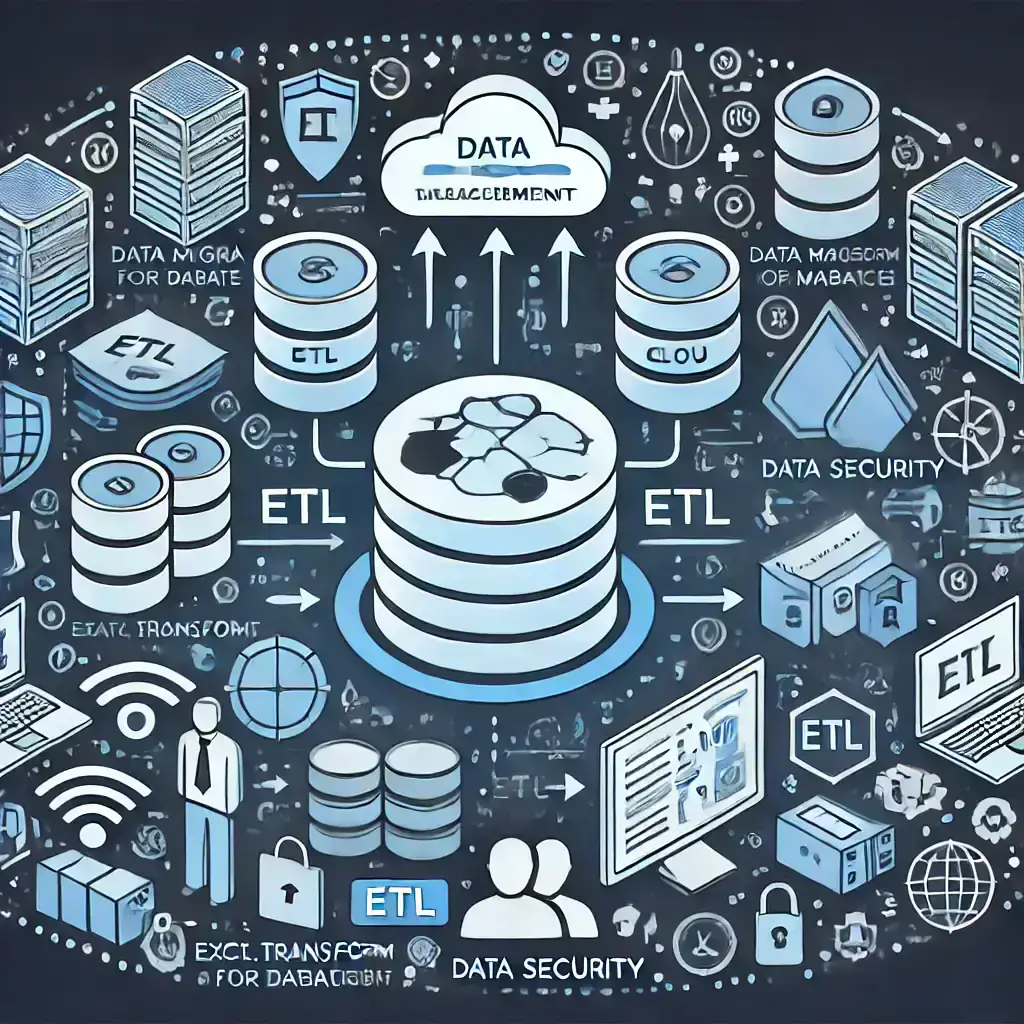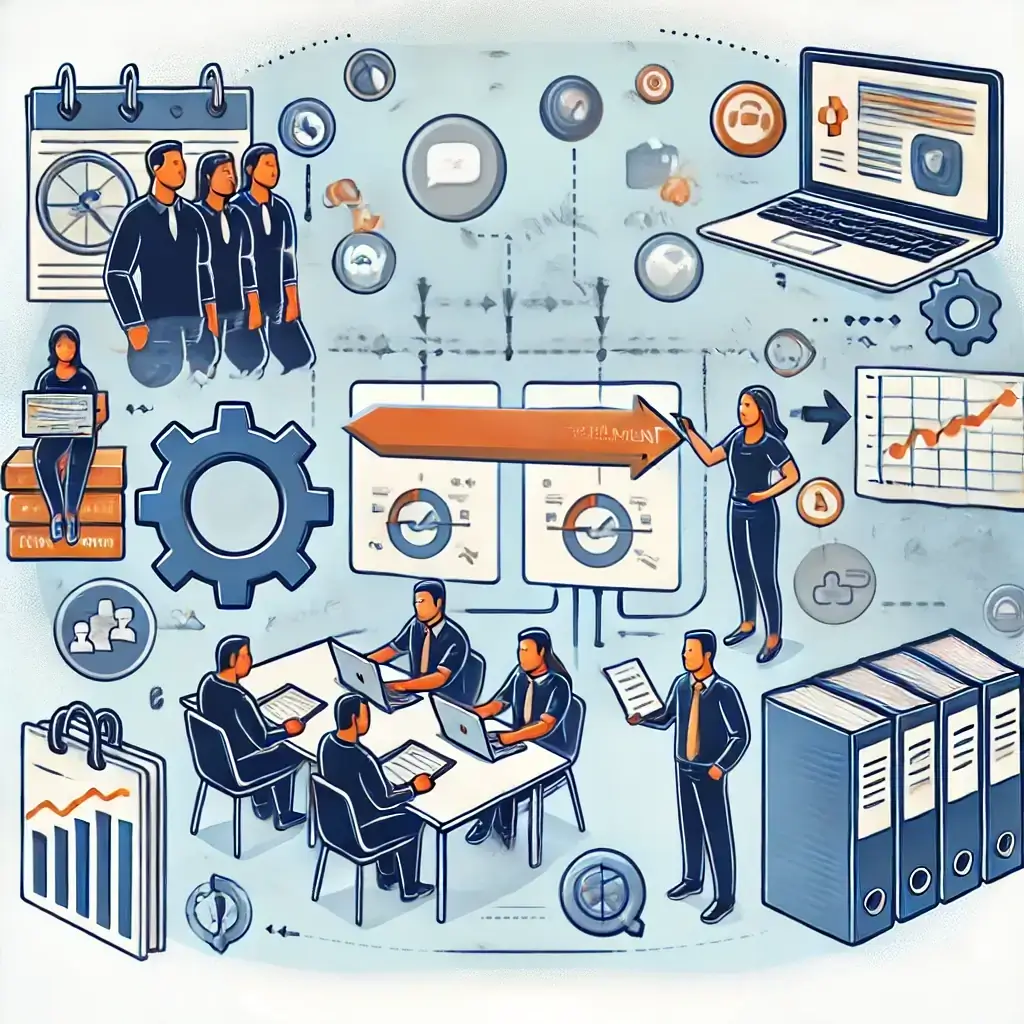· iWork Technologies Team · Product Modernization · 6 min read
Data Migration Strategies for Modernizing Legacy .NET Applications
Learn how to securely and efficiently migrate and manage data while modernizing your legacy .NET applications, including cloud-based databases and ETL processes.

Data Migration
In Part 6 of our 11-part series on modernizing legacy .NET applications, we focus on the critical aspect of data migration and management. As you transition to a modernized architecture, ensuring that your data is handled securely, efficiently, and in compliance with regulations is paramount. This post will guide you through assessing data needs, ensuring data security and compliance, modernizing your database infrastructure, and implementing effective ETL (Extract, Transform, Load) processes for a smooth data transition.
Assessing Data Needs: Identifying What Data Needs to Be Migrated, Archived, or Restructured
Before initiating the data migration process, it’s essential to thoroughly assess your existing data landscape. Understanding what data needs to be migrated, archived, or restructured will help you streamline the process and avoid unnecessary complications.
Steps for Assessing Data Needs
Inventory of Data Assets: Start by creating a comprehensive inventory of all data assets within your legacy application. This includes databases, files, logs, and any external data sources or APIs.
-
Data Classification: Classify your data based on its importance, sensitivity, and usage frequency. Identify critical data that needs to be migrated to the new system, and consider archiving or purging obsolete or redundant data.
-
Business Requirements: Engage with business stakeholders to understand the data that drives key processes and decision-making. Ensure that this data is prioritized during migration to avoid disruptions to business operations.
-
Restructuring Data: Assess whether any data needs to be restructured or transformed to align with the new architecture. This might involve normalizing data, converting data formats, or consolidating multiple data sources into a single, unified schema.
By thoroughly assessing your data needs, you can focus on migrating the most relevant and valuable data while minimizing the risk of migrating unnecessary or outdated information.
Data Security and Compliance: Ensuring Data Privacy and Regulatory Compliance During Migration
Data security and regulatory compliance are critical considerations during any data migration project. Ensuring that your data is protected throughout the migration process and that you remain compliant with relevant regulations is essential to avoid potential legal and financial penalties.
Key Considerations for Data Security and Compliance
-
Encryption: Implement encryption for data both in transit and at rest during the migration process. Use industry-standard encryption protocols to protect sensitive information from unauthorized access.
-
Data Masking: Consider data masking techniques to anonymize sensitive data during migration, ensuring that personal identifiable information (PII) and other confidential data remain protected.
-
Access Controls: Implement strict access controls to ensure that only authorized personnel have access to the data being migrated. Use role-based access controls (RBAC) and audit logging to monitor and control data access throughout the process.
-
Compliance Audits: Conduct compliance audits before, during, and after the migration to ensure that your data handling processes meet regulatory requirements, such as GDPR, HIPAA, or CCPA. Maintain detailed documentation of your compliance efforts to provide evidence in the event of an audit.
-
Data Residency: Ensure that your data migration strategy accounts for data residency requirements, particularly if you are migrating data across different regions or countries. Use cloud services that offer data residency guarantees to meet these requirements.
By prioritizing data security and compliance during the migration process, you can protect your organization from potential risks and ensure that your data remains safe and compliant.
Database Modernization: Moving from Traditional SQL Server to Modern Cloud-Based Databases
Modernizing your database infrastructure is a crucial aspect of the overall application modernization process. Moving from a traditional on-premises SQL Server to a modern cloud-based database offers numerous benefits, including improved scalability, availability, and performance.
Steps for Database Modernization
-
Choose the Right Cloud Database: Start by selecting a cloud database service that aligns with your application’s needs. Popular options include Azure SQL Database, Amazon RDS, and Google Cloud SQL, which offer managed services for SQL Server. Consider using NoSQL databases like Azure Cosmos DB or Amazon DynamoDB if your application requires high scalability and flexibility.
-
Database Migration Tools: Leverage database migration tools provided by cloud vendors to streamline the migration process. Tools like Azure Database Migration Service, AWS Database Migration Service, and Google Database Migration Service offer automated migration capabilities, reducing the complexity of the transition.
-
Schema and Index Optimization: Take the opportunity to optimize your database schema and indexes during migration. Remove any unused indexes, optimize query performance, and ensure that the schema is aligned with the new architecture.
-
Data Integrity and Consistency: Implement mechanisms to ensure data integrity and consistency during migration. This might involve using transaction logs, snapshots, or replication to maintain data consistency between the old and new databases.
-
Testing and Validation: Thoroughly test the new database setup before going live. Validate that all data has been migrated correctly and that the new database meets performance, scalability, and security requirements.
Database modernization not only enhances the performance and scalability of your application but also positions your infrastructure to take advantage of advanced cloud-based features, such as automated backups, high availability, and disaster recovery.
ETL Processes: Extract, Transform, Load Strategies for Smooth Data Transition
A successful data migration requires effective ETL (Extract, Transform, Load) processes to ensure that data is accurately and efficiently moved from the legacy system to the new environment. ETL processes play a critical role in transforming data into a format that aligns with the new system while maintaining data quality and integrity.
Key Components of ETL Processes
-
Extract: Begin by extracting data from the source system. This could involve connecting to various databases, files, or APIs to pull data. Ensure that the extraction process is optimized to handle large volumes of data without impacting the performance of the source system.
-
Transform: Once data is extracted, it needs to be transformed to fit the new system’s requirements. This might involve data cleansing, normalization, aggregation, or conversion. Use data transformation tools or scripts to automate this process, ensuring that all transformations are consistent and repeatable.
-
Load: Finally, load the transformed data into the target system. This step involves inserting or updating records in the new database, ensuring that all data is correctly mapped and integrated with the new system.
-
Incremental Migration: Consider implementing incremental migration strategies to minimize downtime and reduce the risk of data loss. By migrating data in batches or phases, you can validate the accuracy of each migration before proceeding to the next.
-
Monitoring and Logging: Implement monitoring and logging mechanisms to track the ETL process in real-time. This allows you to quickly identify and resolve any issues that arise during the migration, ensuring a smooth transition.
Effective ETL processes are essential for ensuring that your data is accurately and efficiently migrated to the new system, minimizing the risk of data loss or corruption during the transition.
Conclusion
Data migration and management are critical components of modernizing legacy .NET applications. By thoroughly assessing your data needs, ensuring data security and compliance, modernizing your database infrastructure, and implementing effective ETL processes, you can achieve a smooth and successful data transition that supports your modernized application’s performance and scalability.
In the next part of this series, we will explore the importance of application security in the context of modernized .NET applications, focusing on best practices for securing your newly modernized infrastructure and codebase.



